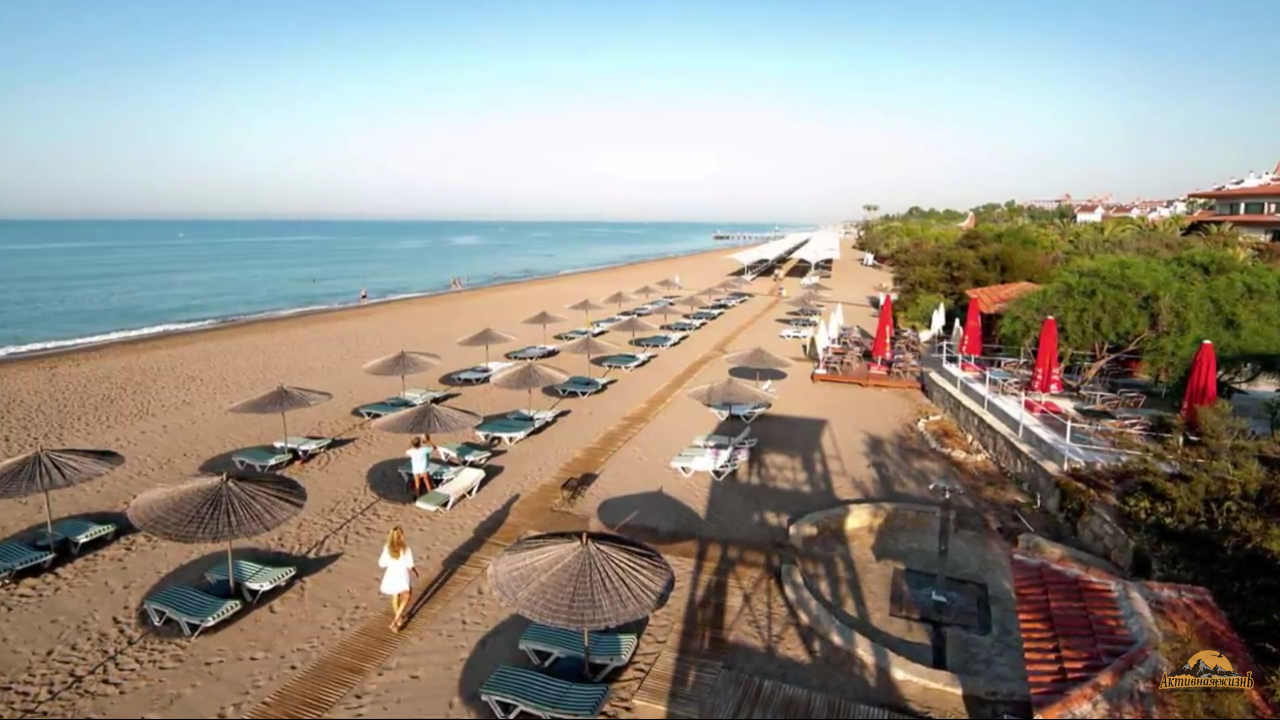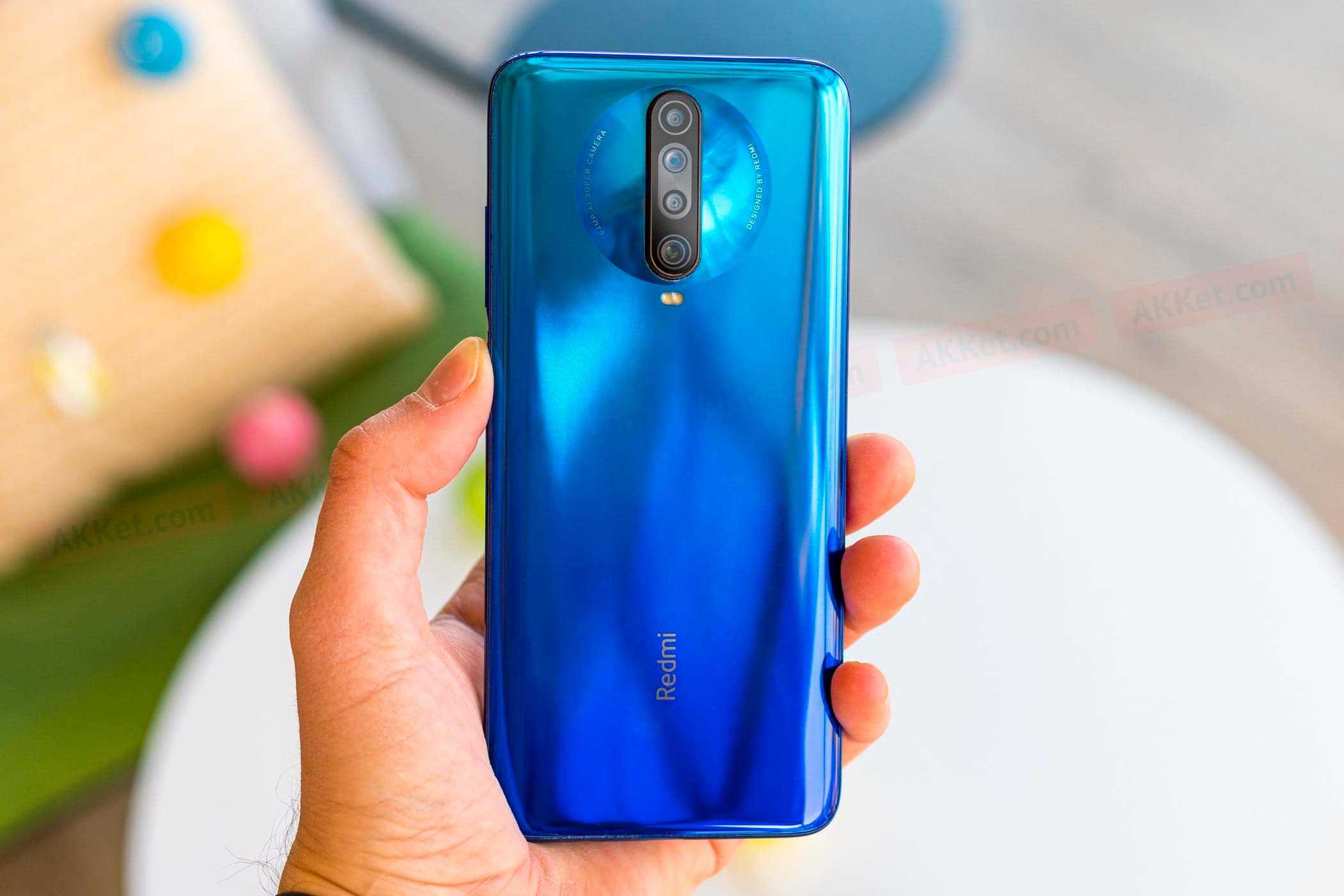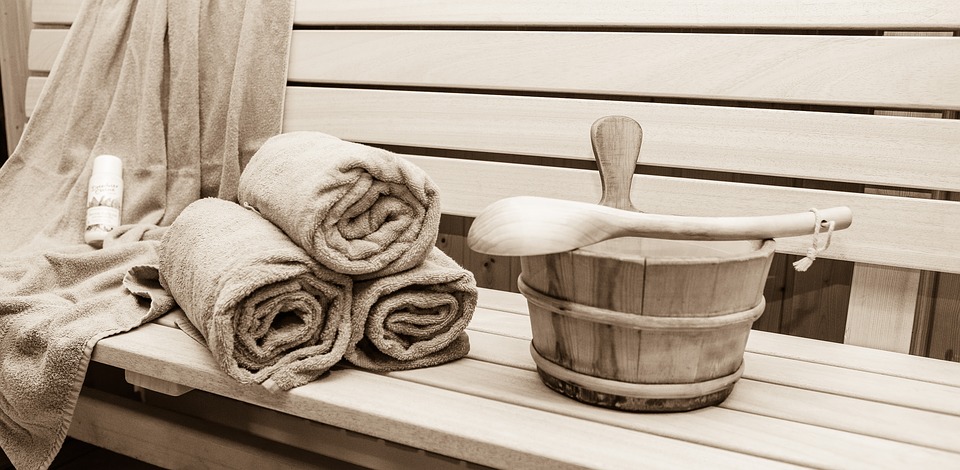The best petanque sets for 2022
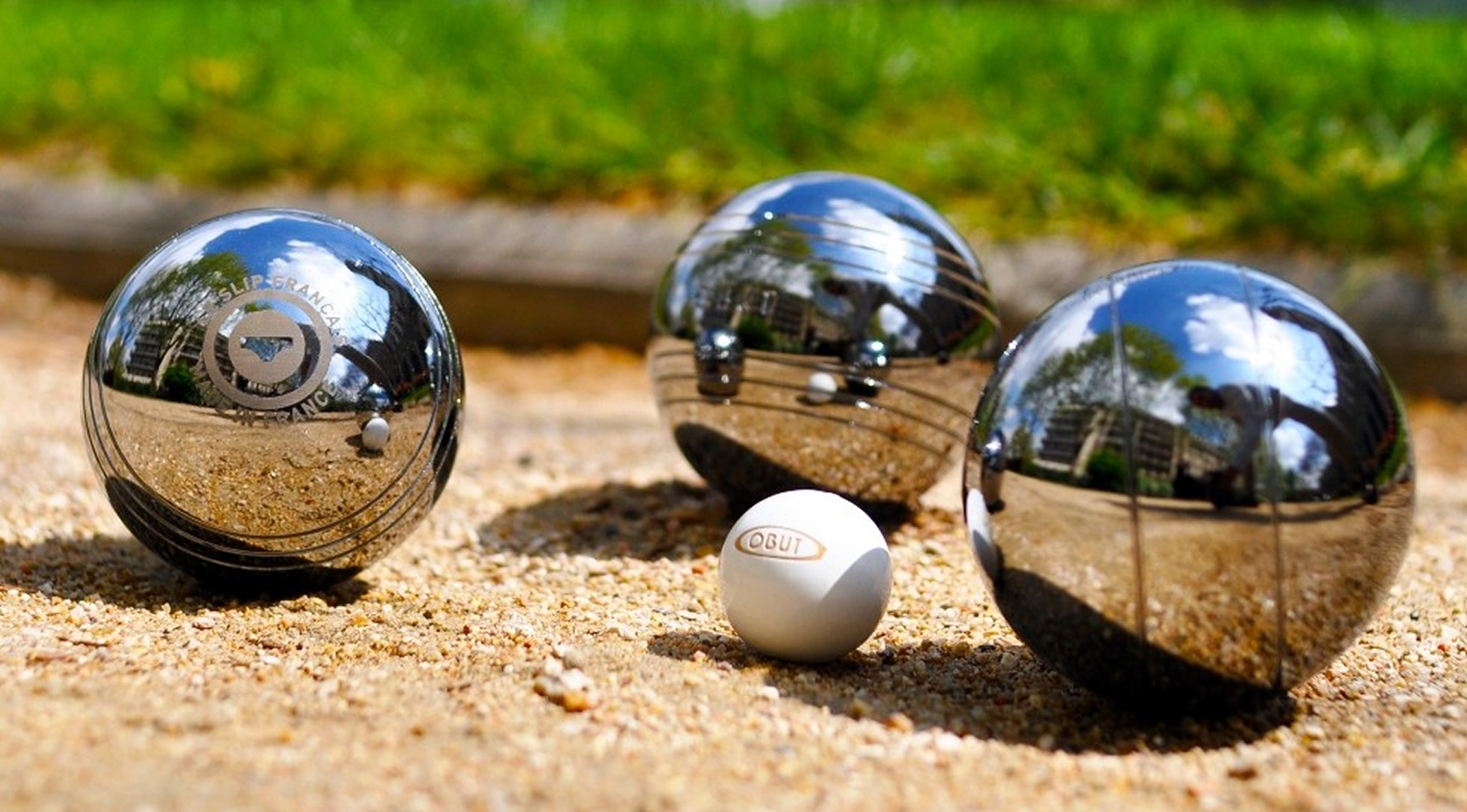
Petanque is a fun outdoor game that both adults and children can take part in. It does not require special skills and a specially equipped platform. But, despite this, the fun pastime with throwing balls over time turned into a national hobby of the entire French people, and then spread to the entire world community.
Content
The history of petanque in the world and in Russia
If you look deep into history, then the games associated with throwing round objects took place as early as the 6th century BC. So in ancient Greece there were competitions in throwing stones at a distance. In ancient Rome, the goal of the throw was not range, but accuracy. Especially such competitions were encouraged in the army - thanks to them, the soldiers trained such qualities necessary in battle as an eye, accuracy, clarity and coordination of movements. The winners of impromptu competitions were generously awarded.
After the fall of the Roman Empire, the whole of Europe fell into decline, and sports games too. Only in the 13th-14th centuries, according to historical sketches, the game of wooden balls again became widespread. But it has already acquired completely different features - the inventory has become wooden, and the goal of winning is not the respect of colleagues and superiors, but money. This hobby so captured the whole society, especially the soldiers, that they gave him their time even while on guard. It got to the point that the authorities forbade playing, fearing fines and punishments, but even this did not stop the avid players-soldiers. Thus, petanque not only covered the entire population of the country, but also became its national treasure and calling card along with the Eiffel Tower and the Marseillaise.
The history of modern petanque begins in 1907 and is associated with the small French town of La Ciotat. It was there that the elderly Provençal Jules Le Noir, who loved to play bowls with his friends, gave petanque a modern touch. The man suffered from rheumatism, which caused unbearable pain when walking, but he did not want to give up his favorite pastime. Therefore, Jules suggested throwing wooden spheres while standing in one place, and not as before - after three steps.Most of the players accepted the novelty, perhaps because they themselves did not have the best health, and three years later a small Provencal town hosted the first petanque tournament under the new rules. For a long time the game was played with balls made of wood, stone or bone. Because of this, too many controversial situations arose during the tournaments. And only in 1927, thanks to the mechanic Jean Blanc, who was able to connect the forged hemispheres, they began to use metal balls.

After 32 years, petanque competitions reached the international level, and in 1959 in Belgium, in the city of Spa, the first world championship in petanque among men was held, in which the French team took the gold. The championship is held every 2 years. Women's teams have been participating in international competitions since 1988.
In Russia petanque also found its adherents. For a long time, competitions in this sport in the country were of an unofficial nature and were carried out by the efforts of enthusiasts. They independently traveled to international tournaments, where they even won prizes. In 2003, the first steps were taken to create an official federation. It was then that petanque was included in the first section of the All-Russian Register of Sports of the Russian Federation. But only 15 years later, in 2018, the Petanque Federation of Russia was created. Since then, various events have been held to popularize this sport among the population.
Rules of the game
To play petanque, you need a set of metal balls and a cochonette (a smaller wooden ball that later plays the role of a target). 2 teams compete, each of them can have from 1 to 3 players. The rules stipulate that the total number of shells should not exceed 12.Therefore, when there are 3 people in the team, there are only 2 for each of them. If the team consists of 1 or 2 participants, then they play with three spheres. The team that will make the first throw is chosen by lot. It is she who outlines a small circle on the site (with a diameter of 30-35 cm), from which throws will be made in the future. The first player stands in the outlined circle and, without leaving it and without taking off his legs, throws the kochonette at a distance of 6-10 meters from himself. Then the next player of the same team throws the first ball so that it lands (stops) as close as possible near the target (jacket). After that, a member of the second team does the same actions in order to throw his projectile closer to the jack than the player of the previous team.
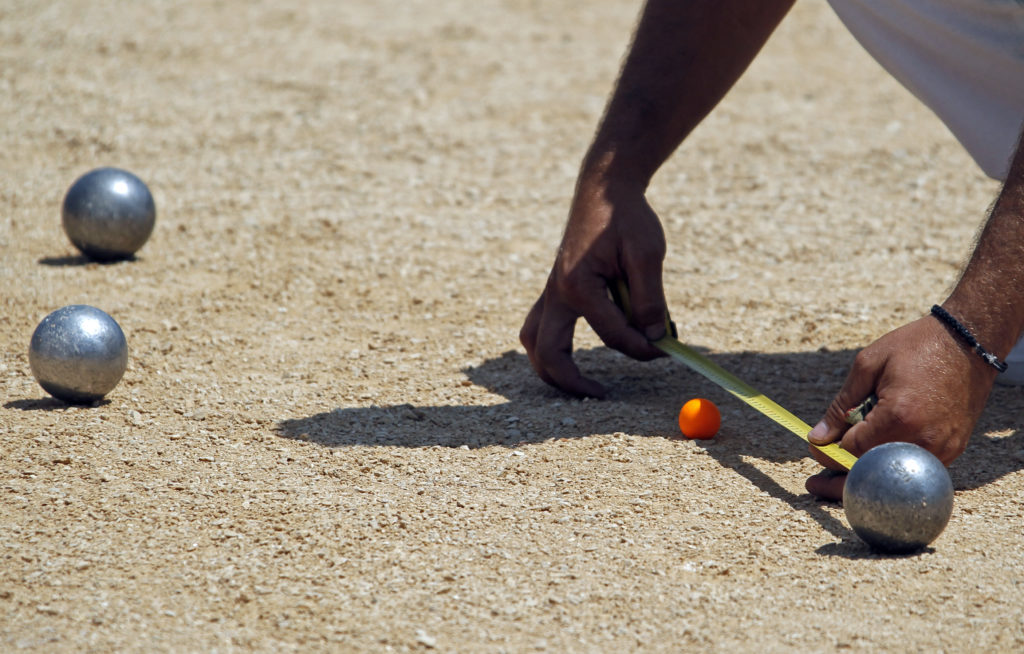
The round lasts until the teams run out of balls. For each projectile located as close as possible to the jack, the team receives 1 point. The whole game lasts up to 13 points.
How to choose equipment for petanque
The choice of equipment for petanque depends largely on how professional your practice of this sport is. This, first of all, is reflected in the cost of inventory - for an amateur level, sets will cost 2-6 thousand rubles, professional sets can cost more than 100 euros. Amateur not only cheaper, but also easier. They are perfect for family leisure and meetings with friends in nature. With a more serious approach to the game, you should choose professional accessories. When buying them, you need to pay attention to the following characteristics:
- manufacturer.
This criterion becomes important in the case of participation in international competitions.The International Petanque Federation has established a list of 20 producers who produce permitted brands of inventory. The most popular of them are: OBUT, JB Petanque, La boule bleue, La boule noire, KTK.
- hardness.
According to this criterion, soft, semi-soft, semi-hard and hard are distinguished. Manufacturers most often express hardness in units of ROCKWELL "HRC" or in kg / mm². For example, 39 HRC means 124 kg/mm². The higher the score, the harder the ball. The harder it is, the more resistant it is to impact, but the stronger it will bounce in a collision, and vice versa. Soft ones give less bounce on impact and less rolling on landing. Of the minuses - a shorter service life. Preferred for playing on hard surfaces. Semi-soft have almost the same properties, they can be played on different types of surfaces. Hard and semi-hard are suitable for playing on a soft surface. They transmit the energy of the throw as much as possible in a collision and have a longer service life. Of the minuses - covered with burrs after collision with hard surfaces.
- material.
Most often, the material for production is carbon or stainless steel, sometimes bronze is used. Stainless steel inventory does not rust and does not require special care. However, its cost is higher. Of the minuses - it is difficult to find soft stainless steel balls.
Carbon steel (carbon) tools are cheaper than their stainless counterparts, and require special care due to their ability to rust. Therefore, carbon fiber should be regularly wiped with an oiled rag.
Bronze inventory is highly sensitive to mechanical stress and quickly loses its acceptable appearance. But training with it is effective in developing accuracy of throws.
- size (diameter).
The rules allow the use of inventory with a diameter of 70.5-80 mm. But the selection according to this criterion is carried out for each player individually, depending on the size of the hand. Selection can take place using a special device or according to the length of the brush.
Properly selected petanque sports equipment does not fall out of the hand, but it does not get stuck when thrown.
- the weight.
According to international rules, a projectile weight of 650-800 grams is allowed. Lighter ones (650-700 g) are easier to throw, heavier ones are more stable and harder to knock out. But, first of all, it is necessary to focus on personal feelings: with a heavy one, the hand will get tired more and faster, and, conversely, if it is too light, there is a high probability of throwing the target.
- notches.
In principle, notches are not a mandatory attribute. Spheres without notches ("bald") have good flight characteristics - they do not cling to the hand and fly in a strictly specified direction. With notches, they adhere better to the ground and are more difficult to knock out. The number of notches can vary from one to two or three, but it is extremely difficult to find inventory with a large number of notches.
Summing up the intricacies of choosing petanque equipment, it should be noted that the choice of one or another combination of characteristics largely depends on what style of playing behavior a person chooses. There are 3 types of players: shooter, pointer and middle.
The shooter aims to knock out the enemy's projectiles so that they bounce as far as possible from the kochonette. In this case, lighter (up to 720 g) and hard spheres without notches and with a large diameter are most often used. They are more predictable in terms of flight path.
The pointer aims to throw his ball as close to the jack as possible.In this case, preference is given to soft ones with a smaller diameter (up to 74 mm), but with a large weight (710-740 g), which makes them more resistant to being knocked out by others. Pointers often prefer notched projectiles, which grip the surface more securely.
Middle takes an average position between a shooter and a pointer. His game behavior changes depending on the current situation on the field. In this case, preference is given to balls with average characteristics.
Sets for children's petanque
China Bluesky Trading
This Chinese manufacturer offers a set of 8 petanque balls. The set is designed for children ages 3 and up to play. All projectiles are made of plastic. The diameter of the large ones is 7 cm, the kochonnet is 3.5 cm. It is filled with water for greater stability. Large ones are painted in 4 colors - yellow, green, blue and red. They all have the same notch pattern. The set is packed in a kind of plastic case-container.
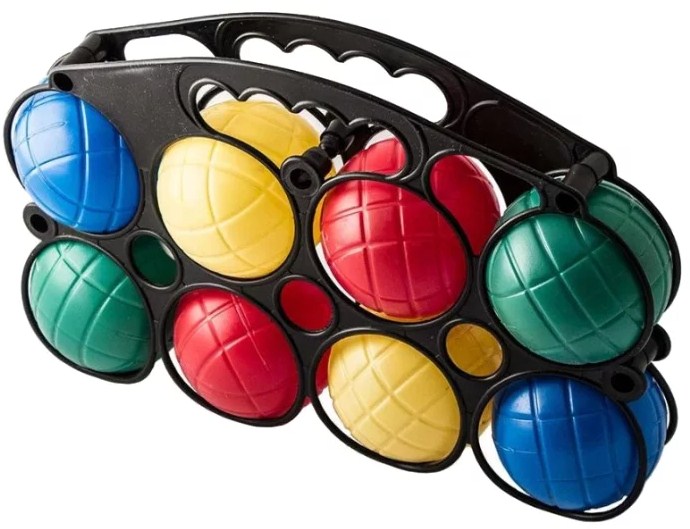
The cost is from 480 rubles.
- bright colors;
- suitable for children from 3 years old.
- not found.
Eureka
Under the trademark "Evrika" a children's petanque set of 6 balls is produced. Their main feature is that they are soft - they have sand inside. Their diameter is 9 cm, the kochonette is 4.5 cm. There are 2 colors in the set - half of the shells are silver, half are black. The set is designed for children over 7 years old. The kit also includes a zippered carrying bag and a measuring tape.
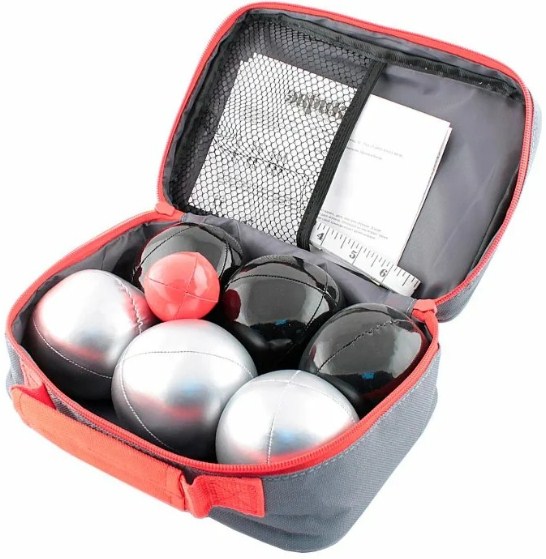
The cost is from 1200 rubles.
- less traumatic than metal;
- 2 shell colors;
- convenient bag with carrying handle;
- suitable for children from 7 years old.
- not found.
GEOLOGIC
Under the trademark GEOLOGIC for children, a petanque set of 8 balls, painted in pairs in 4 colors, is produced. They and the pouch are securely fixed in the carrying basket. All shells are made of low density polyethylene, due to which they are light and soft (do not knock on the floor when playing indoors). In addition, they have notches, due to which they do not slip out of the child's hand. Weight 210 g. The set is designed for children over 3 years old.
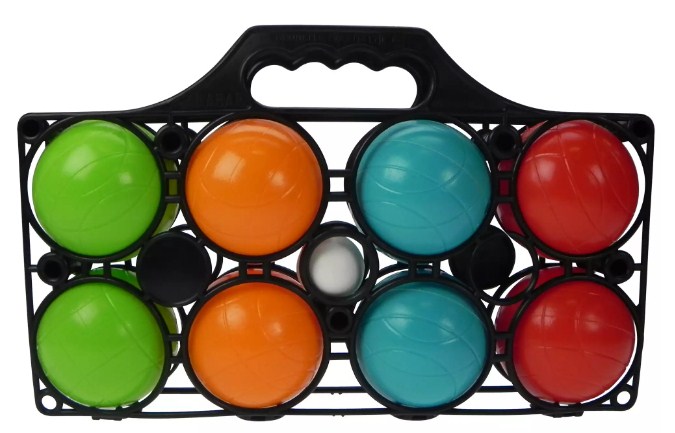
Cost - from 500 rubles.
- bright;
- quality material;
- lungs;
- Convenient carrying case.
- no instructions.
Amateur Level Kits
ecoBalance
ecoBalance is a brand of sporting goods and outdoor equipment, headquartered in St. Petersburg.
Under this brand, several options for petanque sets are produced, differing in the number of balls (6 and 8 pieces).
All sets are packaged in nylon pouch with zip and handle for easy portability. Throwing balls are made of steel, however, the manufacturer does not indicate which one. Their diameter is 70 mm, the weight of each is 750 g. There are several options for coloring the balls - steel, gold, rainbow, black. In some sets, half of the inventory has one color, half the other. In addition, they differ in pattern and number of notches for convenience and ease of determining belonging to a particular player. In addition to the main ones, the kit includes a cochonnet, which is made of wood, a distance meter and instructions. Suitable for children over 10 years old.

The cost of sets of 6 shells varies from 1600 to 2200 rubles, of 8 - from 2400 to 2800 rubles.
- several color options;
- different number of notches for identification;
- quite resistant to impacts (do not scratch much when hitting each other and the ground).
- paint peels off quickly
- one diameter and weight option.
street hit
Under the Street Hit brand, a large number of sports equipment and outdoor products are produced. Under the Street Hit brand, 3 types of petanque sets are produced, in which 3, 6 or 8 balls. All shells of this brand have a weight of 730 g and a diameter of 73 mm. Several color options are offered - steel, gold, black, rainbow, it is also possible to combine two colors in one set. The kit includes a bag with a zipper for easy transportation and storage of inventory, a wooden pouch, a measuring rope equipped with a peg for outlining a circle, instructions.
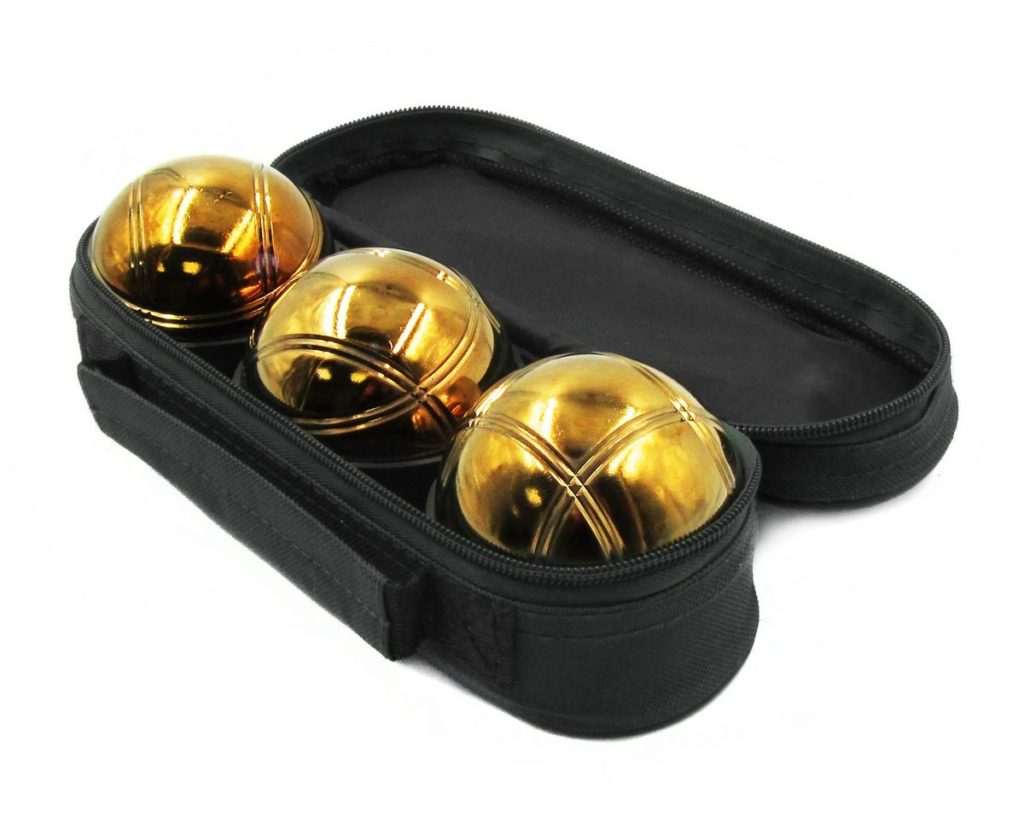
The cost of the set varies from 1200 (3 pieces) to 2570 rubles. (8 pcs.).
- 3 configuration options (3, 6, 8 pcs.);
- different color options;
- The set includes a handy carry bag.
- presented in the same weight and diameter.
GEOLOGIC
A set of 3 balls made of chrome-plated steel is suitable for the amateur game of petanque. Spheres weighing 560 g and 70 cm in diameter are suitable even for owners of small hands (women, teenagers). They are made in 2 versions - smooth and ribbed. Designed for playing on sand or grass. They require regular maintenance in the form of wiping with an oiled cloth to prevent corrosion. The inventory is packed in a cloth mesh.
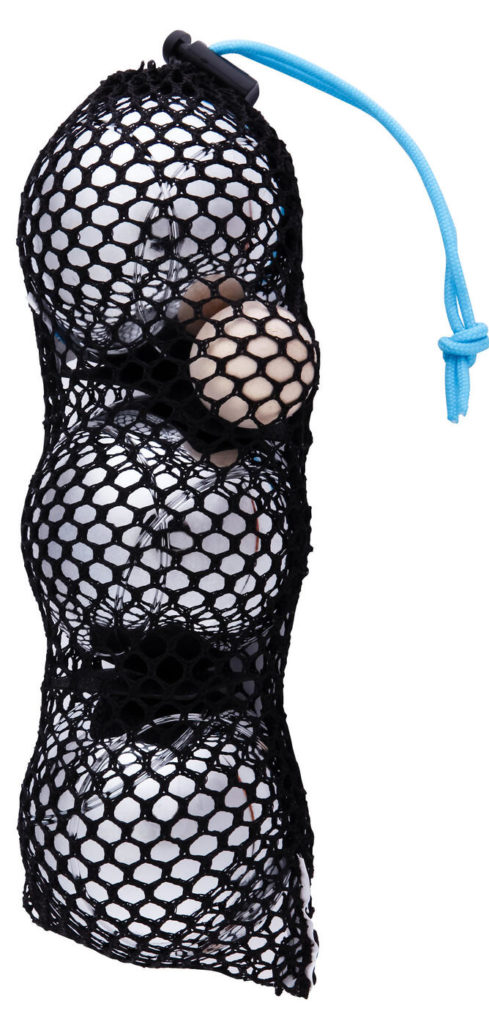
The cost is from 700 rubles.
- quality steel;
- there are both smooth and ribbed;
- comfortable weight for the amateur level.
- weight less than allowed by international standards;
- not suitable for playing on hard surfaces (gravel).
Pro Play Sets
GEOLOGIC ALPHA
ALPHA balls from GEOLOGIC are suitable for athletes starting their journey in petanque. They are presented in a smooth and corrugated version with a diameter of 72 mm and a weight of 690 g. They are solid, the density index is 45 HRC (146 kg / mm2). Due to this, it is resistant to impacts and rebounds more strongly in a collision. Each projectile is engraved with the brand name. The balls are made of carbon steel, which requires regular maintenance - wiping with oiled rags. The set is packed in a cardboard box.

The cost is from 4000 rubles.
- inventory is certified;
- there is a smooth and corrugated version;
- the manufacturer specifies the hardness.
- packaging is not convenient for transportation.
GEOLOGIC DELTA
GEOLOGIC trademark DELTA carbon steel balls are semi-solid. Density is 39 HRC (124 kg/mm2). Projectiles are available in 4 available versions: smooth version with a diameter of 73 mm and a weight of 680 g, 73 mm and 700 g, 74 mm and 700 g, a ribbed version with a diameter of 74 mm and a weight of 720 g. The set includes 3 projectiles and a box, packed into a cardboard box.
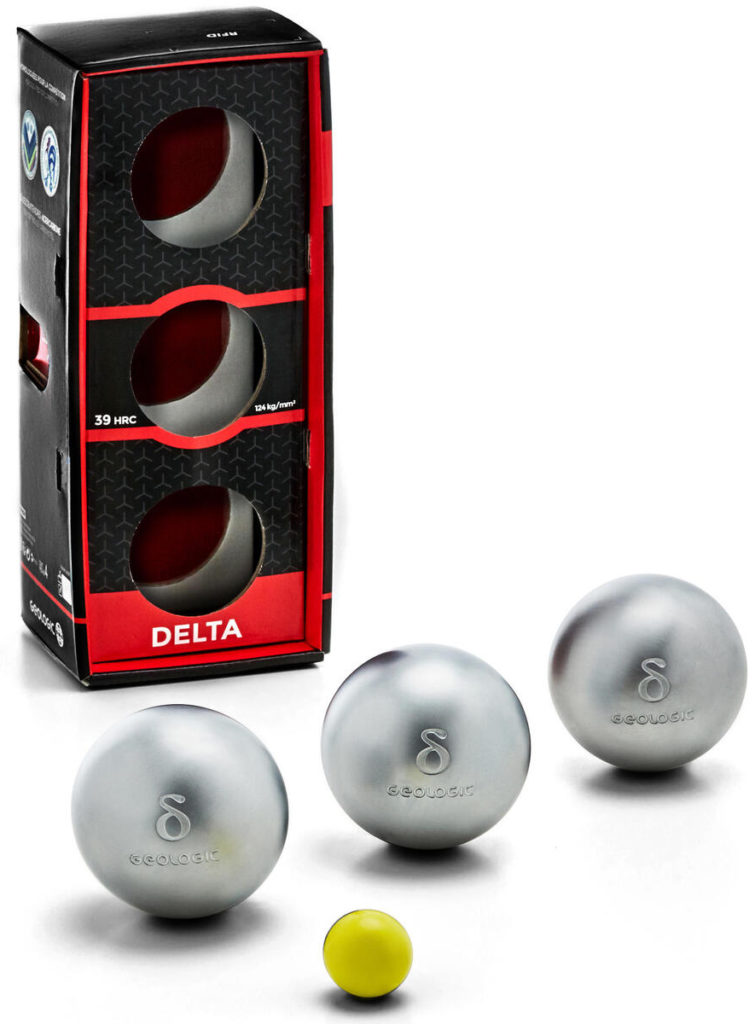
The cost is from 4900 rubles.
- several weight and diameter options;
- made of carbon steel;
- certified.
- awkward packaging.
Obut
Obut is a French professional petanque equipment company founded in 1955. For more than half a century, the Obut brand has offered the widest range of petanque balls.Under this brand, several types of balls are produced that differ in their properties: MATCH, MATCH 115 IT, OBUT TON'R, OBUT ATX, OKARO SOLEIL, RCC, etc. Obut inventory can be made from both alloyed carbon steel and nickel- chrome plated stainless. The cost will increase depending on the material. The manufacturer offers a choice of projectiles of various sizes: diameter from 71 to 76 mm, weight from 650 to 730 g. At the same time, they can differ in hardness from soft ones with a density of 110 kg / mm2 up to semi-solid 130 kg/mm2 (38-41 HRC). Perhaps smooth execution and with notches, if desired, you can order a ball with a personal engraving. Separately, we single out a series for children's professional petanque Match Minimes with the following parameters: diameter 65 mm, weight 600 g, 140 kg / mm2.
The kit includes 3 balls packed in a cardboard box, a microfiber cloth, a wooden jack.
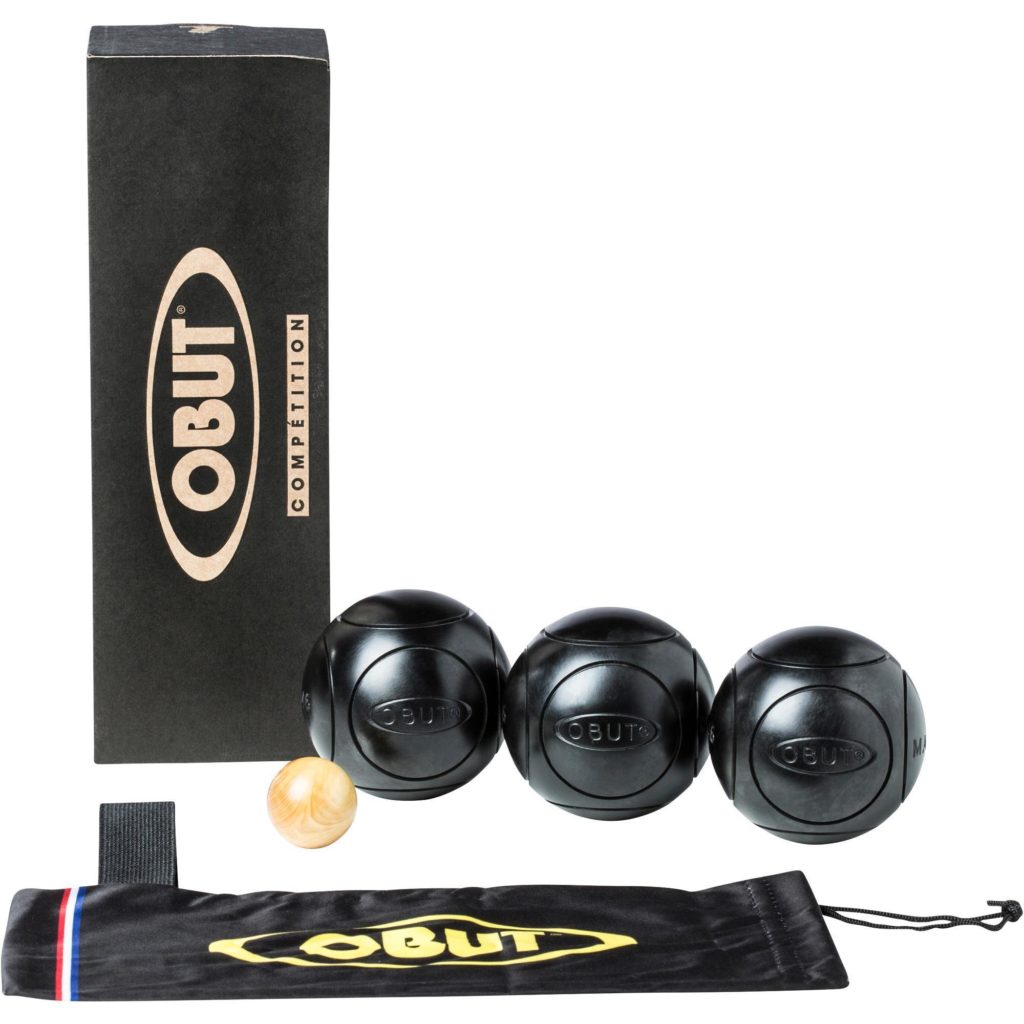
The cost is from 5800 rubles. (youth version), from 6700 rubles. (for adults).
- a diverse range in terms of size, weight and density;
- there are options in carbon and stainless steel;
- there are smooth balls and notches;
- you can order a personal engraving;
- 3 years warranty;
- fully comply with international standards.
- You can buy only in a specialized online store.
La Boule Blue
La Boule Bleue was founded in 1904 in Marseille. Since then, it has specialized in the production of petanque balls. Initially, they were made of wood, then bronze and brass. Since 1947 in hardened carbon steel, since 1961 in stainless steel. Under the La Boule Bleue brand, inventory is produced for both beginners and professionals.There are several brands: "Carbone 120" rose, "Prestige Collector Inox 111", "Prestige Collector Carbone 111", "Super inox 125", "Inox 115", etc. The brand name reflects the composition and hardness. In general, the manufacturer offers balls in the following range of parameters: diameter from 71 to 80 mm, weight from 650 to 800 g, density 110-140 kg / mm2. The material of manufacture is hardened carbon steel or stainless steel. The set includes 3 balls.
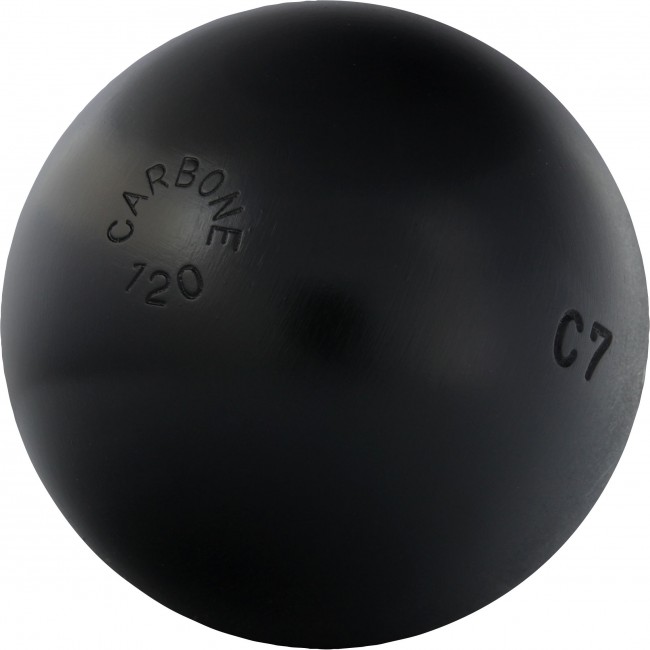
Cost - from 10200 rubles.
- a wide range (all diameters and weights allowed by the standards are presented);
- all hardness options are presented;
- there is an inventory of both carbon and stainless;
- about 40 notch pattern options are available for order;
- 5 years warranty;
- comply with international standards.
- you can order only in a specialized online store;
- expensive.
In conclusion, it must be emphasized that if the game of petanque is only a fun weekend entertainment for you, then there is no point in purchasing expensive professional equipment. Even if you decide to try yourself as a participant in the competition, at first, to fill your hand and put a throw, balls for an amateur game are suitable. As soon as you decide exactly on the diameter, and most importantly, on a comfortable weight, it makes sense to think about professional equipment.
new entries
Categories
Useful
Popular Articles
-

Top ranking of the best and cheapest scooters up to 50cc in 2022
Views: 131656 -

Rating of the best soundproofing materials for an apartment in 2022
Views: 127696 -

Rating of cheap analogues of expensive medicines for flu and colds for 2022
Views: 124523 -

The best men's sneakers in 2022
Views: 124040 -

The Best Complex Vitamins in 2022
Views: 121944 -

Top ranking of the best smartwatches 2022 - price-quality ratio
Views: 114983 -

The best paint for gray hair - top rating 2022
Views: 113400 -

Ranking of the best wood paints for interior work in 2022
Views: 110324 -

Rating of the best spinning reels in 2022
Views: 105333 -

Ranking of the best sex dolls for men for 2022
Views: 104372 -

Ranking of the best action cameras from China in 2022
Views: 102221 -

The most effective calcium preparations for adults and children in 2022
Views: 102015
